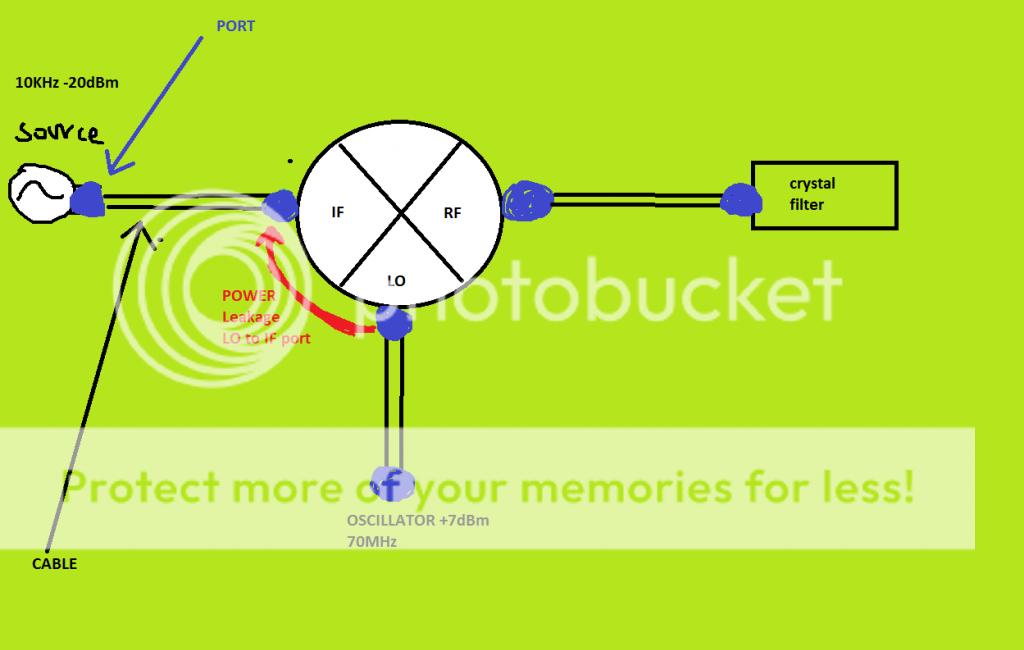Fovakis
Member level 5
- Joined
- Nov 15, 2012
- Messages
- 88
- Helped
- 1
- Reputation
- 2
- Reaction score
- 1
- Trophy points
- 1,288
- Location
- Greece,Athens
- Activity points
- 2,028
Hi ! I am making an RF Transmitter and i have a problem with power leakage for LO port to IF port and RF port. I don't know what to do and i am little confused about how can i fix this.
Source(-10 or -20dBm) 10KHz --------->MIxer conv.loss=8db--------->RF port
and
L.O=70MHz and 7dbm
I put an oscilloscope to mixers input IF and i don't see a sin wave from my Source.it is a sine wave with a lot of phase noice and amplitude variations..when i decrease the L.O power the sine becomes better.
I have heard about attenuators but i cannot understand how they will solve the problem. They attenuate maybe the standing waves that maybe create ?Also and my signal right?
Source(-10 or -20dBm) 10KHz --------->MIxer conv.loss=8db--------->RF port
and
L.O=70MHz and 7dbm
I put an oscilloscope to mixers input IF and i don't see a sin wave from my Source.it is a sine wave with a lot of phase noice and amplitude variations..when i decrease the L.O power the sine becomes better.
I have heard about attenuators but i cannot understand how they will solve the problem. They attenuate maybe the standing waves that maybe create ?Also and my signal right?
